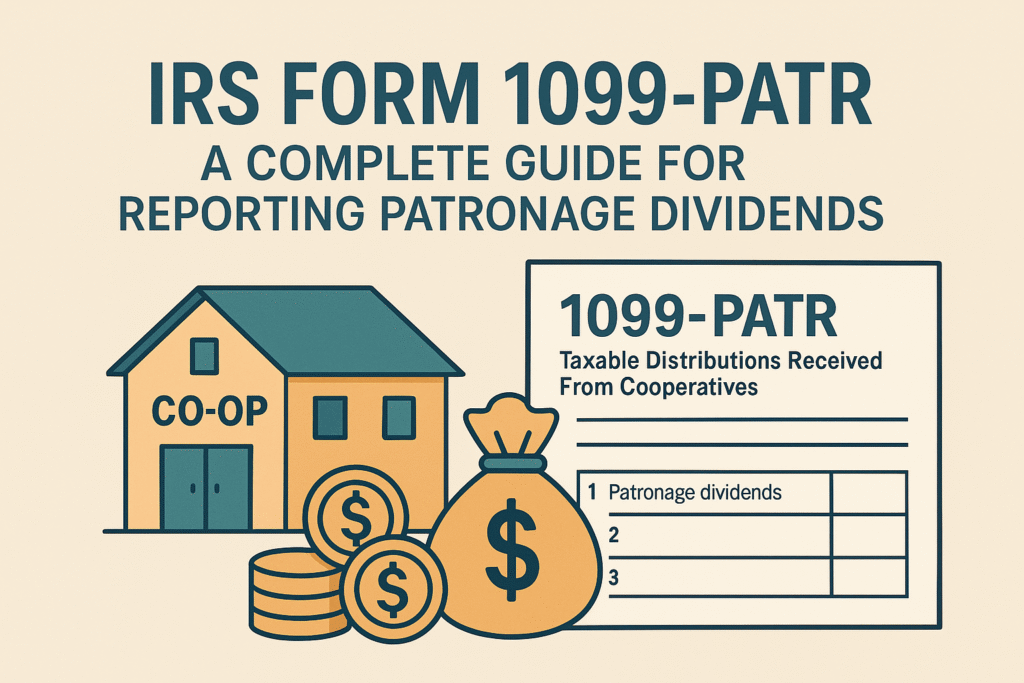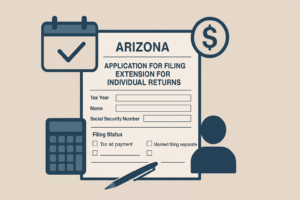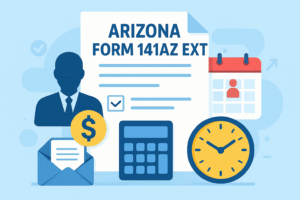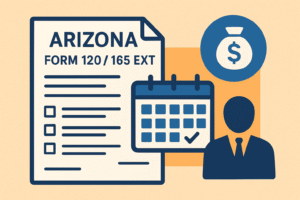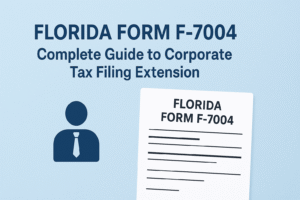Cooperatives play a unique role in the U.S. economy, offering members a share of profits through patronage dividends. These earnings, when distributed, often require tax reporting via IRS Form 1099-PATR. This form ensures that members report the income they’ve received and comply with IRS rules. Whether you’re a cooperative, a tax professional, or a recipient, understanding how to accurately prepare and file 1099-PATR is essential to avoid penalties and maintain compliance.
This guide explains what the form is, who must file it, deadlines, box-by-box instructions, penalties, and extensions, along with practical examples and professional filing tips.
What Is Form 1099-PATR?
Form 1099-PATR, “Taxable Distributions Received From Cooperatives,” is used by cooperatives to report certain distributions paid to their members or patrons. These distributions typically come from the cooperative’s net earnings and may include:
- Patronage dividends
- Per-unit retain allocations
- Other distributions related to the cooperative’s business with its patrons
The IRS requires this form when at least $10 in patronage dividends is paid to a recipient during the tax year. It helps ensure recipients include the income on their tax returns.
What Are Patronage Dividends?
Patronage dividends are profit distributions that cooperatives pay to their members (patrons) based on the amount of business the member conducted with the cooperative, not on stock ownership.
Key points about patronage dividends:
- They are typically based on purchase amounts, sales, or services rendered through the cooperative.
- They may be paid in cash, property, qualified written notices of allocation, or a combination.
- For tax purposes, they are often deductible by the cooperative and taxable to the recipient.
Example:
If a farming cooperative earns $500,000 in profits from its members’ crop sales and allocates $200,000 back to members based on their contribution levels, those payments are patronage dividends and reportable on Form 1099-PATR.
Who Must File Form 1099-PATR?
Any cooperative engaged in business with its members must file Form 1099-PATR if:
- At least $10 in patronage dividends or similar distributions is paid to a member.
- At least $600 in payments is made for certain government payments or other specified amounts.
- Federal income tax was withheld under the backup withholding rules.
Real-Life Example:
A rural electric cooperative provides electricity to 1,500 members. At the end of the year, it allocates $25,000 in patronage dividends to its members, with each member receiving an amount based on their energy usage. Even if one member only earned $15, the cooperative must issue a 1099-PATR for that individual.
When Is the Deadline to File Form 1099-PATR?
The deadlines are:
- Recipient copy: Must be sent to patrons by January 31 of the year following the tax year.
- IRS copy (paper filing): Due by February 28.
- IRS copy (electronic filing): Due by March 31.
If these dates fall on a weekend or federal holiday, the deadline moves to the next business day.
What Information Is Required to Complete Form 1099-PATR?
To complete Form 1099-PATR accurately, you’ll need:
- Cooperative’s name, address, and TIN
- Recipient’s name, address, and TIN (Taxpayer Identification Number)
- Amounts of patronage dividends, per-unit retain allocations, and other relevant distributions
- Any federal income tax withheld
- Applicable tax year
The Role of Form W-9
Before issuing Form 1099-PATR, cooperatives should collect a Form W-9 from each member to obtain accurate TINs and legal names. This helps:
- Avoid IRS mismatches
- Prevent backup withholding
- Ensure correct reporting on the 1099-PATR
How to Complete Form 1099-PATR (Box-by-Box Detailed Instructions)
- Payer’s Name, Address, and TIN – Enter the cooperative’s details.
- Recipient’s Name, Address, and TIN – Use information from the member’s Form W-9.
- Box 1: Patronage Dividends – Report cash, property, and qualified written notices of allocation related to patronage activities.
- Box 2: Nonpatronage Distributions – Report distributions not related to patronage (e.g., investment income distributions).
- Box 3: Per-Unit Retain Allocations – Report payments per unit of commodities marketed.
- Box 4: Federal Income Tax Withheld – If any backup withholding applied.
- Box 5: Redemption of Nonqualified Notices – Report amounts received when redeeming previously issued nonqualified notices of allocation.
- Boxes 6–8 – Report specific investment credit amounts or other specialized tax credits as applicable.
- Account Number – If multiple accounts for one recipient, include the account number for clarity.
What Are the Copies of Form 1099-PATR?
Form 1099-PATR has multiple copies:
- Copy A – Sent to the IRS
- Copy B – Sent to the recipient for their tax return
- Copy C – Retained by the payer for their records
How to File Form 1099-PATR?
You can file either:
- On paper – Mail Copy A with Form 1096 to the IRS
- Electronically – Use the IRS FIRE System (mandatory if filing 10 or more information returns)
Electronic filing is faster and reduces the risk of processing errors.
Where to Mail Form 1099-PATR?
If filing on paper, send Form 1099-PATR with Form 1096 to the IRS service center based on your location.
| If your business operates in or your legal residence is… | Mail Form 1099-PATR to… |
| Alabama, Arizona, Arkansas, Delaware, Florida, Georgia, Kentucky, Maine, Massachusetts, Mississippi, New Hampshire, New Jersey, New Mexico, New York, North Carolina, Ohio, Texas, Vermont, Virginia | Internal Revenue ServiceAustin Submission Processing CenterP.O. Box 149213Austin, TX 78714 |
| Alaska, Colorado, Hawaii, Idaho, Illinois, Indiana, Iowa, Kansas, Michigan, Minnesota, Missouri, Montana, Nebraska, Nevada, North Dakota, Oklahoma, Oregon, South Carolina, South Dakota, Tennessee, Utah, Washington, Wisconsin, Wyoming | Department of the TreasuryIRS Submission Processing CenterP.O. Box 219256Kansas City, MO 64121-9256 |
| California, Connecticut, District of Columbia, Louisiana, Maryland, Pennsylvania, Rhode Island, West Virginia | Department of the TreasuryIRS Submission Processing Center1973 North Rulon White Blvd.Ogden, UT 84201 |
| Outside the United States | Internal Revenue Service,Austin Submission Processing Center,P.O. Box 149213,Austin, TX 78714 |
What Are the Penalties for Not Filing Form 1099-PATR?
Penalties vary based on how late you file and the size of your business:
- $60 per form – Filed within 30 days after the due date
- $120 per form – Filed more than 30 days late but before August 1
- $310 per form – Filed on or after August 1 or not filed at all
- $630 per form – For intentional disregard of filing requirements
Penalties apply separately for failing to file with the IRS and failing to furnish recipient copies.
What Is the Extension to File Form 1099-PATR?
You can request more time using:
- Form 8809 – For an automatic 30-day extension to file with the IRS
- Form 15397 – To request an extension to furnish the recipient copy
Both must be filed before the original due date.
What Are the Exceptions to Filing Form 1099-PATR?
You are not required to file Form 1099-PATR if:
- Total payments are less than $10 for the year
- Payments are made to corporations (except for certain legal services or medical payments)
- The distribution is tax-exempt or otherwise excluded under IRS rules
Final Thoughts
Form 1099-PATR is an important compliance tool for cooperatives and their members. Accurate filing ensures transparency, helps patrons meet their tax obligations, and avoids costly IRS penalties. By collecting Form W-9 early, maintaining accurate records, and filing on time, cooperatives can streamline the process and remain in good standing.

